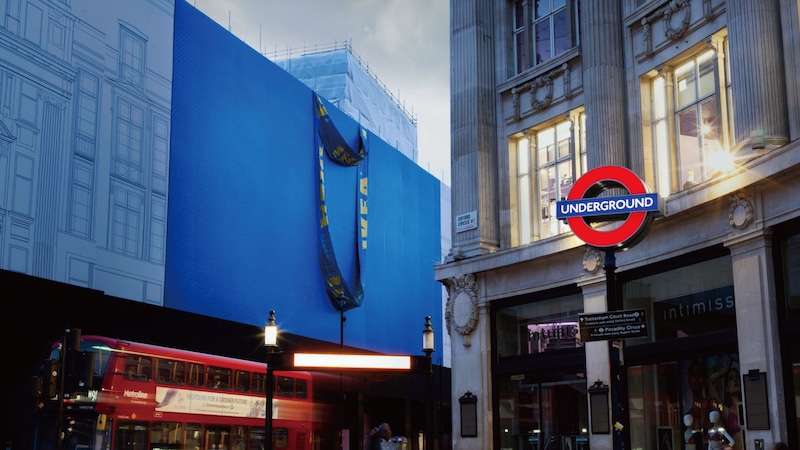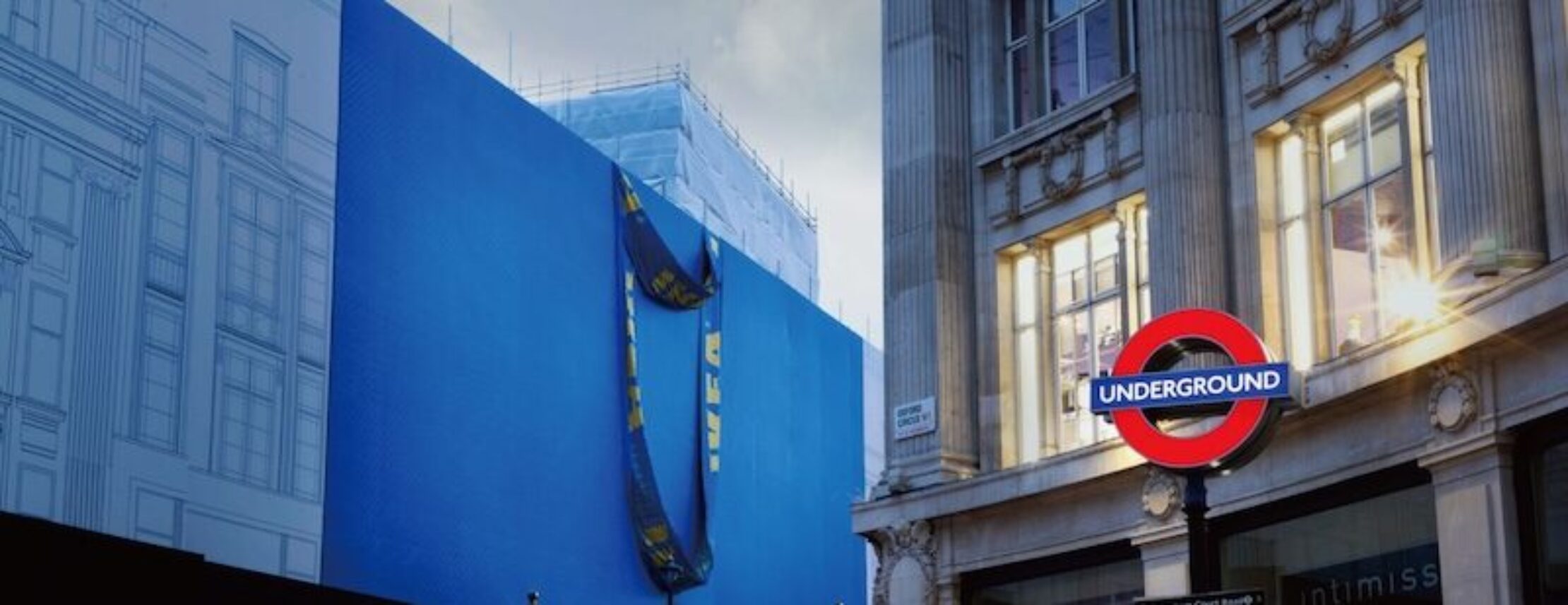Nessan Cleary describes how the sign and display market is shifting towards sustainable alternatives to harmful plastics like PVC. New materials, including PVC-free films and fabrics from recycled PET bottles, offer similar functionality while reducing environmental impact. Printers are also exploring biodegradable options and advising clients on end-of-life disposal, turning sustainability into a key business opportunity.
There’s a clear trend towards greater sustainability to protect the environment and the planet that we all depend on to live. But at the same time, lots of display graphic applications require functionality, such as weather resistance, that can most cost-effectively be delivered with plastic substrates, which is at odds with the principles of sustainability. So, how can we square this circle?
One obvious option is to look for more environmentally-friendly options wherever possible. This could include more paper-based boards such as Rebord, which should be suitable for many interior uses and some short term exterior applications, as well as more use of textiles, including for outdoor banners. It’s equally possible to use plywood, MDF or other wooden boards in many cases. Some of these materials could be reused multiple times with new jobs simply printed on top of older ones. In some cases you may need to re-skin the surface to refresh the boards and ensure the ink can adhere properly.
However, the reason that plastic is so widely used is because it’s just so effective. It forms the basis of many substrates that offer good exterior functionality, including good ink adhesion, combined with light weight and low cost. So clients and print service providers will inevitably keep specifying these substrates.
Take, for example, PVC or Polyvinyl chloride, which is waterproof and weather resistant offering very long service life for outdoor displays. However, it is one of the most environmentally-harmful materials around. For a start, the vinyl chloride gas used in its production is carcinogenic. PVC is also a major fire hazard as it can give off toxic gases if burnt, and even after use it can pollute landfill sites by leaching noxious compounds. Worse still, recycling PVC simply compounds these problems so the only real option is to stop using it. In addition, the phthalates that are usually added to the PVC to make it more flexible are also dangerous to human health as they attack the endocrine system that regulates hormones and can cause reproductive problems.
Yet PVC remains one of the most commonly used substrates with new offerings still coming to market amid fears that the alternatives simply won’t perform as well. In general these alternative materials do have a different response to heat. For printing with latex or resin ink, the profile needs to be spot on, particularly in terms of the amount of ink and therefore heat that is used to dry the ink. You may also need to allow extra material around the edges to allow for any shrinkage when installing the graphics.
The other issue is that there is simply less choice, though a growing number of vendors are now offering PVC-free materials. Innotech, for example, sells a good range of self-adhesive PVC-free vinyls that use materials such as PET or PP and even includes laminate films to match.

Kavalan has also developed a range of PVC-free product for different uses, from frontlits, backlits and blockout materials to mesh and wall coverings. Embrace Building Wraps, based in Cheltenham, created an eye catching building wrap for a new Ikea store in London using Kavalan’s PVC-free Sunlight Weldable banner material, designed to look like a an Ikea Fractal bag.
Greg Forster, managing director of Embrace Building Wraps, explained that it was far lighter than a conventional PVC banner material, making it easier to install. He noted: “Also, what is very key these days is fire rating. Now we know the substrate has a TS62, NFP, EN and DIN certifications. We also sent the material away to a UKAS-certificated facility in the UK, and that passed a BS 5867 type B test.” He added: “We are continuing our ongoing quest to move away from traditional PVC products wherever possible, minimising and offsetting any negative environmental impact when doing business.”
Some fabrics are made with a yarn that’s spun from recycled PET plastic bottles, which gives fresh life to what would otherwise have been single-use plastics. In most cases, these displays can themselves then be recycled with their plastic content used to make something else. This all helps to reduce the amount of virgin plastic that is manufactured and that would otherwise go on to pollute our oceans, where they could find their way into our own food chain.

Psycho Peacock, a large format bureaux based in Salford, has been using Soyang Europe’s ST-216 R Nightstar blockout fabric and ST-601 R Starlight coated backlit materials, which are both made from recycled PET bottle yarn. Andy McIntyre, General Manager of Psycho Peacock, commented: “We didn’t adopt sustainability to gain a competitive edge, but it has naturally fortified our market position. Our goal is to lead by example, encouraging the industry to adopt sustainable practices.”
The other half of the equation is the eventual disposal of each graphic. The total environmental footprint for each graphic isn’t just down to the production, but also the end of life so print service providers should also investigate any measures that can avoid simply sending the materials off to landfill.
That said, there are options for materials that do end up in landfill. Prizma Graphics, for example, sells a Biodegradable Foamboard that has a lightweight polystyrene core with a skin made of paper and card. This consists of around 15 percent of recycled material together with bio resins. It’s designed to be sent to landfill, where the bacteria that typically inhabit such sites will get to work on it, encouraged by the bio resins. It’s said to completely decompose in around one to five years, which is far quicker than conventional foamboards that can last for a hundred years or more. However, users should be aware that the ink used will also have an impact on the biodegradability. HP Latex ink, for example, will biodegrade naturally, particularly if exposed to sunlight, in under a year.
In conclusion, print service providers will increasingly find themselves having to advise clients on the sustainability of their display graphics. That can be a headache because of the need to search out and test suitable materials. But it can also be a business opportunity that can be marketed to potential clients looking to satisfy their own green requirements.
